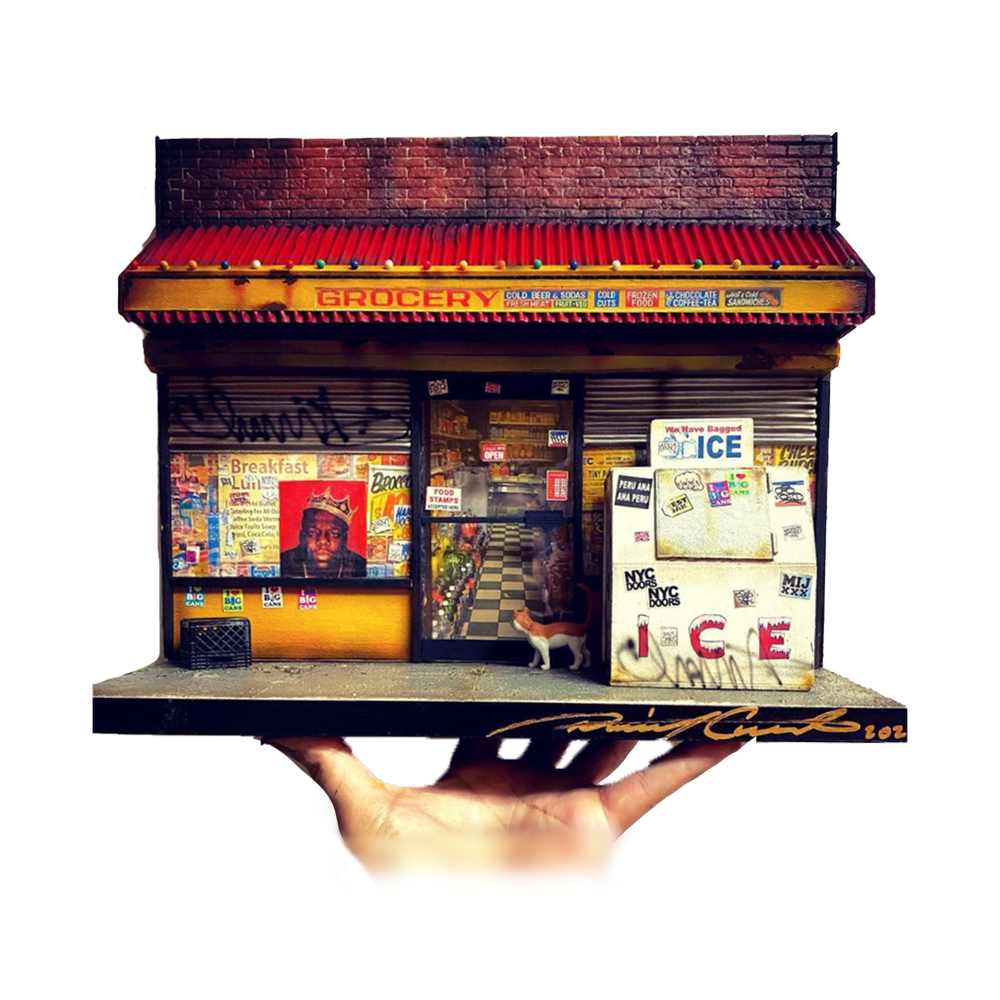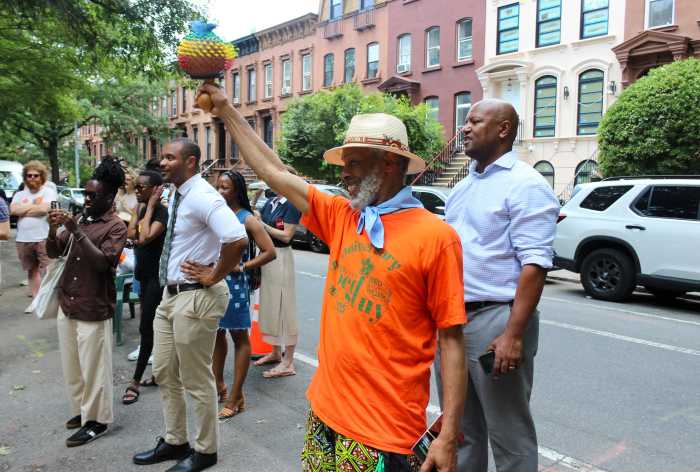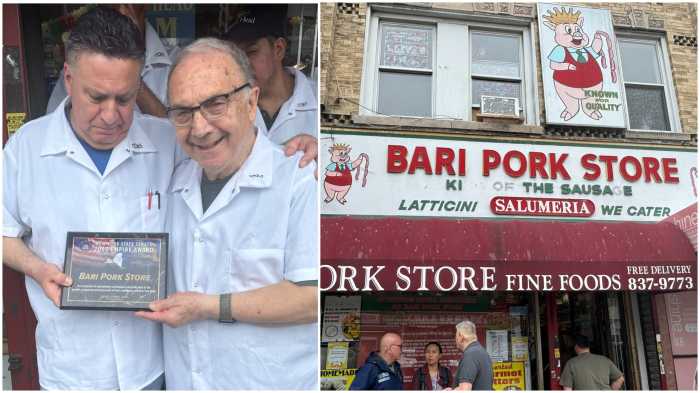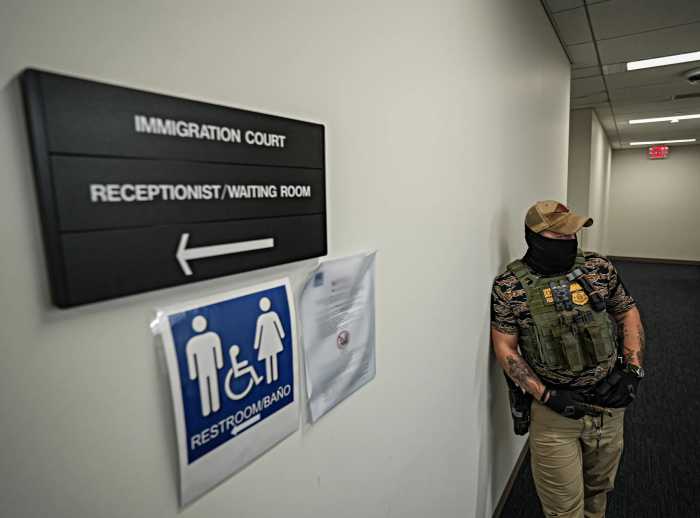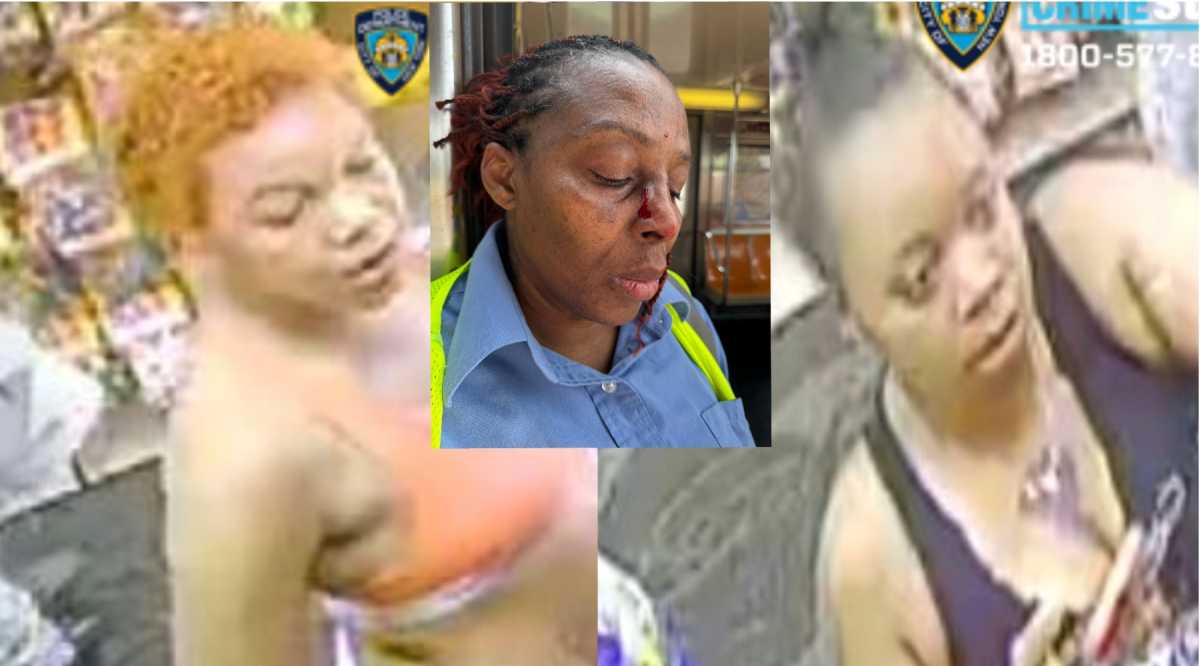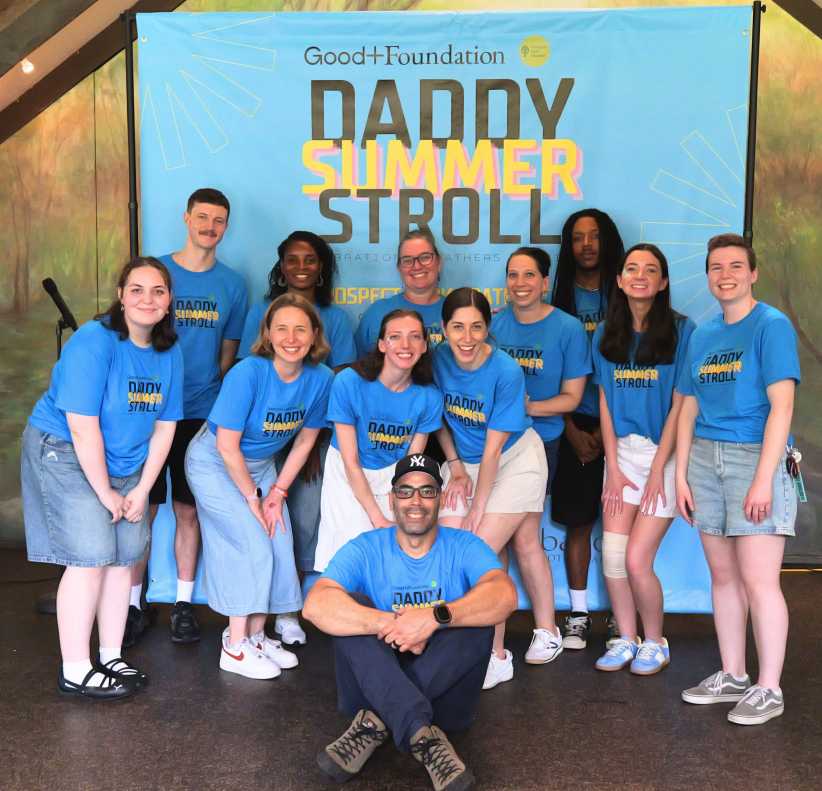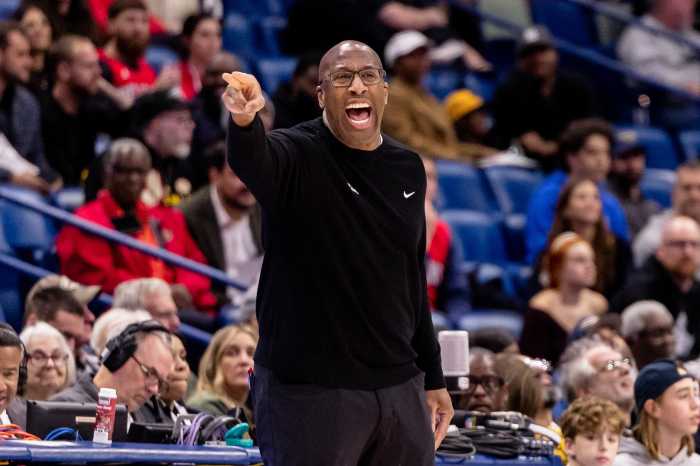It’s a small borough after all…
That is if you had a chance to visit the Center for Brooklyn History’s pop-up exhibition, which showcased three of Brooklyn’s premier miniature artists and their to-scale models of beloved local businesses and landmarks in an ever-changing borough.
Each artist displayed work at the recently renovated Pierrepont Street space that represents Brooklyn — including brownstones, firehouses, businesses, and graffiti-covered street objects like mailboxes, iceboxes and streetlamps.
Miniature artist Jack Giambanco, who started making models regularly during the pandemic, said he only realized the historical value of his work when he began to get feedback from the public.
“Seeing how other people reacted to the models opened my eyes to the bigger picture and the historical meaning behind these models,” Giambanco told Brooklyn Paper of his artistic journey into the world of miniatures.
As businesses began to shutter and struggle as a result of the pandemics, Giambanco decided to put his 3D modeling skills from a past business venture to good use, recreating businesses like the A&S Italian Pork Store on Avenue X and Brennan & Carr, a sandwich shop on Nostrand Avenue in Sheepshead Bay.
“What I’ve noticed is that these places touch people really deep down inside,” said Giambanco. “I didn’t know how much people would be affected by seeing miniature models of a place that no longer exists, that they used to go to and love. You kind of forget it’s a miniature and actually feel like you’re there again. So it brings out a lot of emotion in people.”
One of Giambanco’s popular miniatures of Sheepshead Bay’s Roll N Roaster, a southern Brooklyn staple since 1970, was the catalyst for the pop-up exhibition. The Gravesend artist reached out to the Center for Brooklyn History to offer his model for display after hearing the iconic eatery is featured in the center’s ‘Brooklyn Is’ exhibition which explores the neighborhoods and people of the borough.
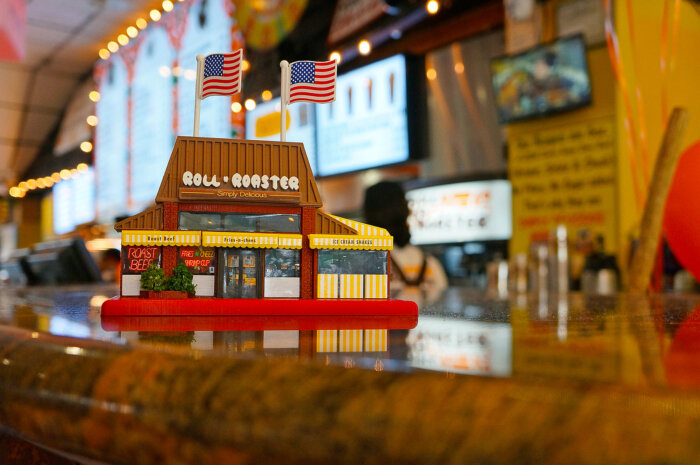
Marcia Ely, who oversees public programming at the Center for Brooklyn History, told Brooklyn Paper that the call from Giambanco sparked the idea for the pop-up miniature exhibition showcasing iconic Brooklyn scenes.
Ely’s team quickly found other miniature artists with a shared-love of Brooklyn to showcase their work in the expo, which ran from Nov. 27 through Dec. 2.
“One of the things that I love about bringing them all together is that they’re all very Brooklyn in very different ways,” she said. “They live in the same borough, but they see it completely differently and interpret it completely differently.”
Artists Danny Cortes and Aaron Kinard quickly signed up to be part of the expo of longtime Brooklynites whose passion for making miniatures developed over the last few years and captivated art lovers across the nation.
“People are hungry for it,” Ely said of the public’s reaction to the two-week exhibition, which often saw members of the public huddled around the miniatures, closely inspecting every detail with their phone torches. “There is a shared nostalgia that people have when they look at these pieces.”
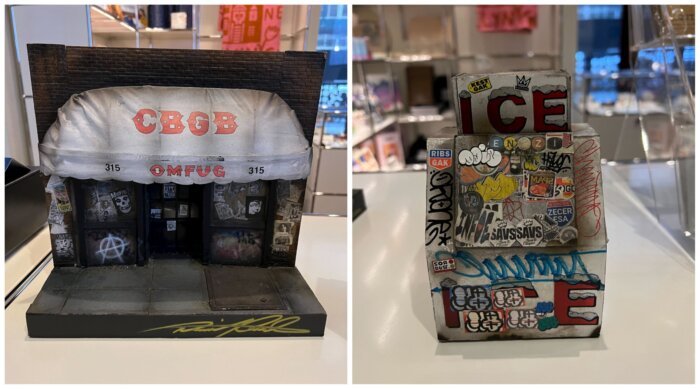
Cortes’s miniatures capture his childhood growing up in Bushwick and the gritty New York of the 1990s. His urban landscapes detail every gum stain, sticker, and rust-worn gate in intricate detail.
“Danny’s focus, his vision is the 80s and 90s New York streets that he remembers growing up. New York was down on its heels then, it was having a lot of economic problems and so that’s what he has been capturing in these pieces, and it resonates with a lot of people,” Ely said of Cortes’ work.
Featured in the expo, the highly-sought after artist’s detailed model of the famed punk club CBGB includes intricately created posters, both recently stuck up and pulled down on the graffiti ladened walls of the iconic venue. Also on display was a variation of Cortes’ signature graffiti daubed icebox, a version of which sold at Sotheby’s auctioneers last year for close to $2,000.
Aaron Kinard, who has been making urban dioramas for four years, uses his art to express both his love of New York and his concerns for the world.
His model titled ‘I Can’t Breath’ looks like a typical Brooklyn brownstone, but upon further inspection of the front windows, Kinard used horrifying photographs of lynchings in the South. Viewed from the back, the shape of the brownstone doubles a a tombstone.
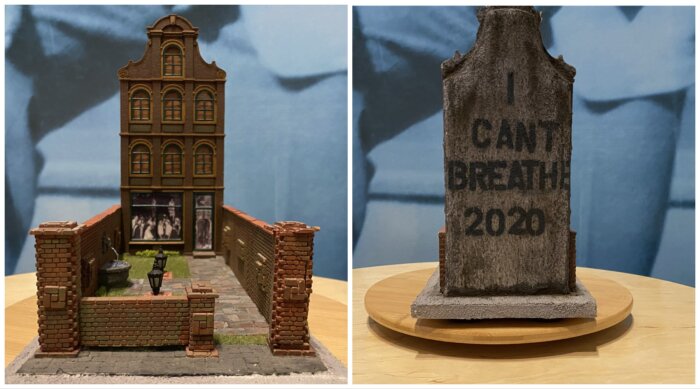
“Aaron’s story relating to this piece is that he couldn’t really go out and protest during 2020, after the death of George Floyd. He didn’t feel safe, it was a pandemic but he wanted to do something that expressed his take on what is happening in our country,” Ely said of Kinard’s work, which ranges from political to romantic.
A personal piece of Kinard’s work on display depicts the first Brownstone he lived in with his longtime partner, titled ‘Home’.
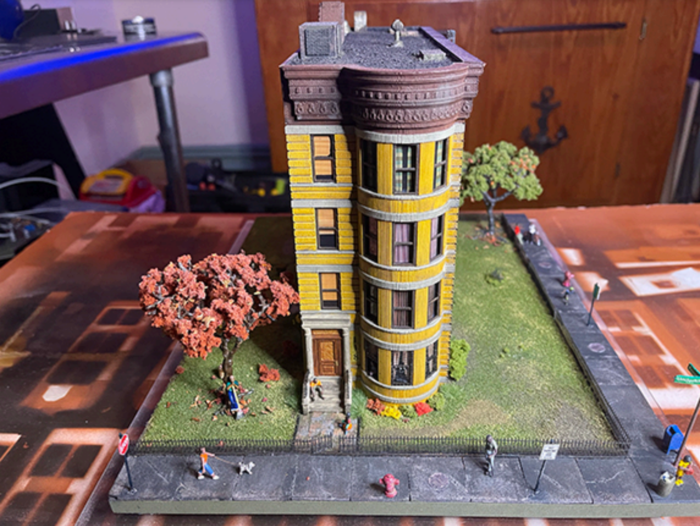
Jack Giambonca said the expo was his first time having his work displayed to the public, an honor he says was made even greater by being showcased alongside Cortes and Kinard.
Offering his gratitude to the Center for Brooklyn History and Brooklyn Public Library, Giambonca said that having the space made available to them was a “huge gift.”
“A lot of people don’t even realize how many programs the library puts on, specifically the Brooklyn History Center,” he said.” I think it should be treated as one of the most important things we have in the city.”
Mayor Eric Adams and his administration’s wide-ranging budget cuts, which are aimed at closing a projected $7.1 billion deficit over the next fiscal year, are already impacting city agencies like the public library systems.
Amid the cuts, Brooklyn Public library has had to end its Sunday services at several locations. Ely told Brooklyn Paper it was too early to know how much the cuts will impact the Center for Brooklyn History but hopes it will be minimal, “but there’s no doubt that that the budget cuts are going to affect all of our work.”


